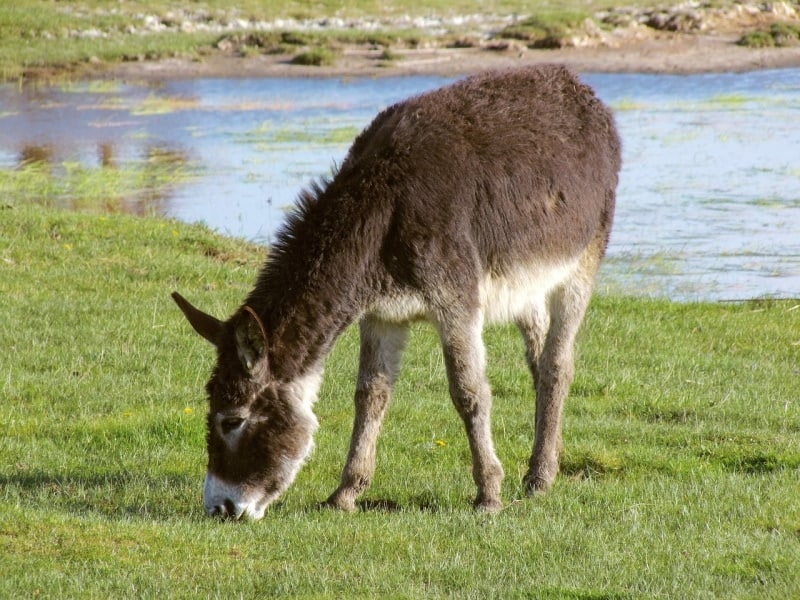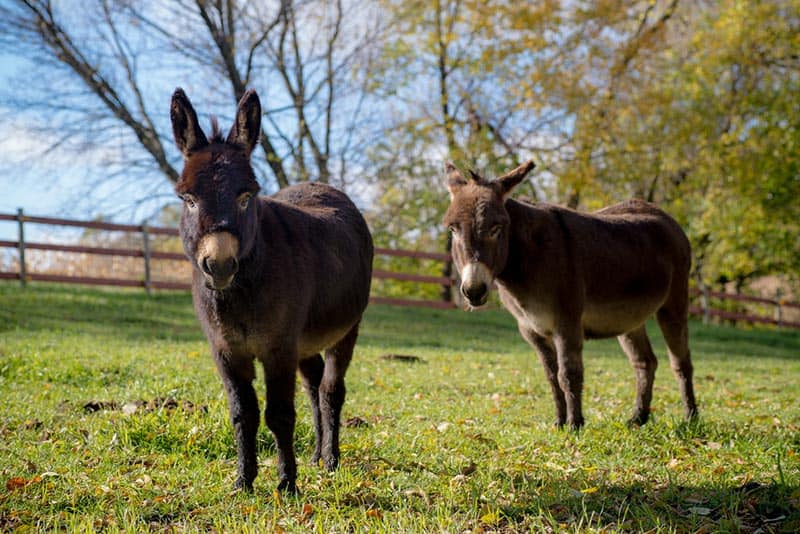There are three varieties of donkeys in the United States: miniature, standard, and mammoth. Miniatures are the smallest donkeys, while mammoths are the biggest. Not only do these creatures make great pets, but they also make excellent guard animals if you have smaller livestock you need to protect.
We’ll discuss facts about the donkey below and give you a size and growth chart for the standard-size donkey.

Facts About Donkeys
Donkeys are classified more by their size than their breed. Donkeys are also called burros and asses.
If you are raising a donkey, it’s probably the domesticated variety, meaning the donkey’s size will vary depending on how the donkey was bred. Domestic donkeys are smaller than their wilder cousins, which are considered either wild or feral. For our purposes, we’ll concentrate on the domesticated, standard donkey.

Donkey Size and Growth Chart
The standard donkey weighs in as an adult at between 200 and 900 pounds and from 31.3 to 63 inches in length. If you’re considering adding a donkey to your farm, this is an excellent choice for a pet to guard your smaller animals.
| Age | Weight Range | Length Range |
| Foal | 19 to 30 pounds | 36 to 56 inches |
| Adult | 200 to 900 pounds | 31.1 to 63 inches |
When Does a Donkey Stop Growing?
Donkeys can live to be over 40 years old. They usually resemble adults by the time they are 2 years old. However, they don’t reach full maturity and stop growing until they are 3 to 5 years old.
Factors Affecting the Size of Donkeys
The type of donkey you purchase will, of course, affect the size it reaches at adulthood, but other factors can also affect its growth. A healthy diet, plenty of space to roam, and daily exercise are vital for the animal’s development.

Ideal Diet for Maintaining a Healthy Weight
Once you’ve decided on the type of donkey you’re going to purchase, you need to know what the ideal diet for maintaining a healthy weight for your donkey might be. Here are some basic rules for feeding your donkey.
- Donkeys are trickle feeders, so feed them small portions several times a day
- If you’re going to change their feeding schedule, do it gradually
- Always feed the donkey according to its weight, temperament, and age
- Never give your donkey dusty or moldy food
- Always have clean water for your donkey
These are the basic rules for feeding your donkey, but your pet also needs feed that is high in fiber to grow to the correct size. Avoid calories, sugar, and foods with a lot of protein for the best results. Hay is great for your donkey, but please watch out for ragwort in the hay, as it is highly toxic to your donkey and can end in death.

How to Measure Your Donkey
When measuring your donkey, you need to use a measuring stick. The measuring stick should have a level and a cross-piece. Place a piece of plywood on the ground, and lead your donkey onto it.
Using a muddy field or any type of uneven ground for your donkey to stand on will result in an inaccurate measurement. Measure your donkey by placing the measuring stick across the donkey’s withers.
Measure from the top of the withers, not the dipping point of the animal, for the most accurate measurement. If you can’t get your donkey to stand still, place a treat, such as an apple, in front of the donkey until you get your measurement. This gives you the best chance of getting an accurate measurement of your donkey’s size.

Conclusion
Donkeys come in different breeds, types, and sizes. Whichever donkey you choose to have on your farm, and even just as a pet, needs to be taken care of carefully so that it is healthy, happy, and reaches the ideal height and weight.
Donkeys can be expensive and require space to move around and exercise, but with the proper care, they will enrich your life for several years.
Featured Image Credit: BearFotos, Shutterstock
